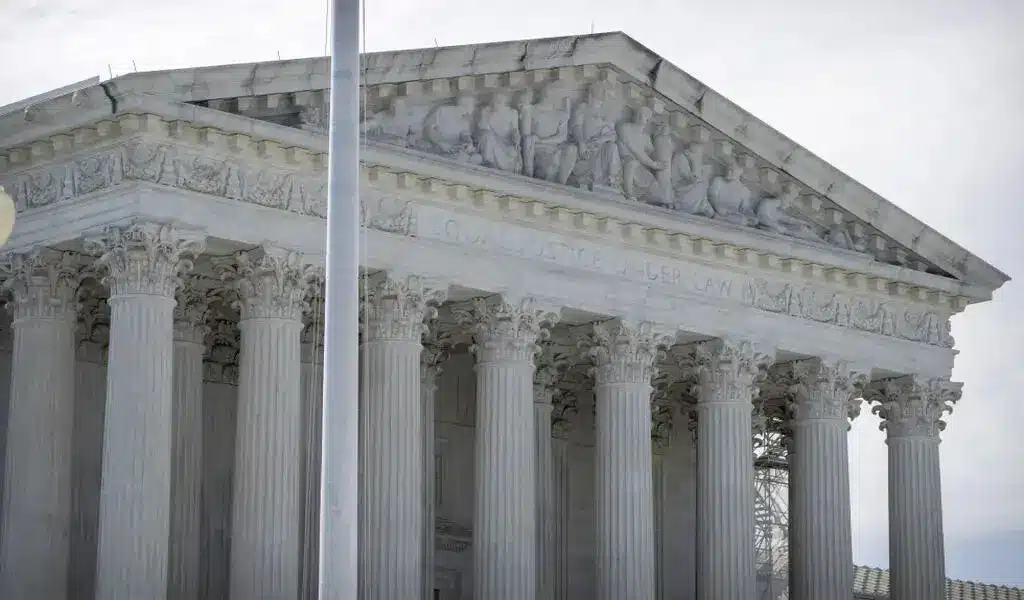News
The Fight with China Over the Mekong River Basin
CHIANG RAI – Countries in the Mekong River Basin, notably those located in the lower part of the river – Asia’s seventh longest – are in need of a collective strategy to secure their future, given China’s control of the upstream part and ongoing changes in global geopolitics.
The 4,909km river runs from Tibet in China through Myanmar, Laos, Thailand, Cambodia and Vietnam. But only its lower portion is regulated by an international agreement and an organization.
The lower part is popularly known as the Mekong, while the upper part in China is called the Lancang.
While all six countries in the basin increasingly utilize resources from the Mekong – such as for the construction of dams in its mainstream and major tributaries, navigation and fishery – there remains no clear procedures for all countries to ensure proper management of the environment and fair resource distribution.
Differences and sometimes disputes over water resource utilization and management have occurred occasionally over the past decade, when some of these activities led to cross-boundary impacts in the sub region.
Hydro-power construction and operation in the Mekong mainstream in China and Laos’ territories have also caused severe impact to the downstream countries. Dams can create fluctuation of water flows, block navigation routes and prevent the natural migration of fish up and down the river.
Four countries in the lower Mekong comprising Laos, Thailand, Cambodia and Vietnam signed an agreement back in 1995 to establish regulations for river utilization and set up the Mekong River Commission (MRC) to coordinate and enforce the agreement.
As the intergovernmental organization, the MRC is struggling to influence the decisions of the individual sovereign nations over the water utilization, with Laos, a member, deciding to push ahead with the construction of Xayaburi and Don Sahong dams in the Mekong mainstream. More dams, including those in Pak Beng and Pak Lay, are in the pipeline.
While the MRC’s major mechanism under the 1995 agreement, known as the Procedures for Notification, Prior Consultation and Agreement (PNPCA), is blamed for not being so effective in influencing its members’ decisions, Laos has decided to redesign its Xayaburi project to be a more environmentally friendly dam.
Although the creditability of the PNPCA as a mechanism to consult stakeholders is less, as seen in the move by civic groups to boycott the latest public hearing on the planned Pak Lay dam recently, MRC officials argue that the mechanism is the sole game in the region to handle the differences on development projects.
The MRC and its four members now face another big challenge in terms of being able to manage the Mekong Basin affairs, as China has sponsored the establishment of the Lancang-Mekong Cooperation (LMC) in 2016 that includes all six Mekong countries into one framework.
While jurisdiction of the MRC and the LMC is different, there are some overlapping areas, particularly in water resource management.
There have been calls over the past few years for the expansion of the MRC to cover the upper part of the Mekong Basin, by inviting China and Myanmar to become full members.
Yet both have maintained their status as “dialogue partners” since 1996. With this status, the MRC has been able to get a certain degree of cooperation on water resource management, with China agreeing to share hydrology information with the organisation.
But other matters remain illusive.
The LMC’s institutions and mechanisms show trends of eclipsing the MRC in the near future as Beijing has plenty of resources and funds to forge bilateral cooperation with countries downstream.
Chinese Foreign Minister Wang Yi, who oversees the LMC, has rejected the idea that the MRC is being overshadowed and has suggested that the two organisations would support and complement each other.
The MRC also tries to have closer relations with the LMC’s Water Resources Cooperation Centre.
MRC chief executive officer Pham Tuan Phan met senior Chinese officials in Kunming on the sidelines of the First Lancang-Mekong Water Resources Cooperation Forum last week to discuss further cooperation between the two organisations.
“China has welcomed our call to strengthen cooperation between the Lancang-Mekong Water Resources Cooperation Centre and the MRC for the benefit of the whole Mekong River basin,” said Dr Phan. “We will be working on further identifying key areas of cooperation that are vital to our work for sustainable development of the Mekong River and the basin’s people.”
According to Dr Phan, the head of the Chinese Joint Working Group for the centre Yu Xingjun said the LMC was trying to find possible ways to work with the MRC.
One of the key areas where cooperation is needed is the sharing of flood forecast data from the Jing Hong hydropower station.
Sharing of the hydrological data during the dry season will benefit development planning and drought management in the Mekong, said Dr Phan.
In 2013, China and the MRC renewed the 2002 agreement on the provision of hydrological information on the Mekong River.
Under the agreement, China now provides water-level data during the flood season for five months from June to October twice daily from two stations located on the Mekong in China. This information is fed into the MRC’s flood forecasting system.
China contributes 13.5 per cent of the flow of the Mekong River, according to an MRC statement.
The MRC said it needs more cooperation from China and the LMC to update its strategic plans on sustainable hydropower and basin development strategy.
“There is no better time than now for China to cooperate with the MRC if it is for the interest of the whole basin population of over 70 million people,” said Dr Phan.
Indeed, the proposal to have closer cooperation between the MRC and the LMC was stressed clearly during an MRC summit in Cambodia’s Siem Reap in April this year.
But the leaders of Cambodia, Laos, Thailand and Vietnam did not spell out the term “cooperation” clearly, given the fact that many countries mostly rely on China under many other subregional cooperation schemes.
Cooperation in this sense is not based on equality and reciprocity, but China in many aspects plays the role of a “donor” country.

News
Google’s Search Dominance Is Unwinding, But Still Accounting 48% Search Revenue

Google is so closely associated with its key product that its name is a verb that signifies “search.” However, Google’s dominance in that sector is dwindling.
According to eMarketer, Google will lose control of the US search industry for the first time in decades next year.
Google will remain the dominant search player, accounting for 48% of American search advertising revenue. And, remarkably, Google is still increasing its sales in the field, despite being the dominating player in search since the early days of the George W. Bush administration. However, Amazon is growing at a quicker rate.
Google’s Search Dominance Is Unwinding
Amazon will hold over a quarter of US search ad dollars next year, rising to 27% by 2026, while Google will fall even more, according to eMarketer.
The Wall Street Journal was first to report on the forecast.
Lest you think you’ll have to switch to Bing or Yahoo, this isn’t the end of Google or anything really near.
Google is the fourth-most valued public firm in the world. Its market worth is $2.1 trillion, trailing just Apple, Microsoft, and the AI chip darling Nvidia. It also maintains its dominance in other industries, such as display advertisements, where it dominates alongside Facebook’s parent firm Meta, and video ads on YouTube.
To put those “other” firms in context, each is worth more than Delta Air Lines’ total market value. So, yeah, Google is not going anywhere.
Nonetheless, Google faces numerous dangers to its operations, particularly from antitrust regulators.
On Monday, a federal judge in San Francisco ruled that Google must open up its Google Play Store to competitors, dealing a significant blow to the firm in its long-running battle with Fortnite creator Epic Games. Google announced that it would appeal the verdict.
In August, a federal judge ruled that Google has an illegal monopoly on search. That verdict could lead to the dissolution of the company’s search operation. Another antitrust lawsuit filed last month accuses Google of abusing its dominance in the online advertising business.
Meanwhile, European regulators have compelled Google to follow tough new standards, which have resulted in multiple $1 billion-plus fines.

Pixa Bay
Google’s Search Dominance Is Unwinding
On top of that, the marketplace is becoming more difficult on its own.
TikTok, the fastest-growing social network, is expanding into the search market. And Amazon has accomplished something few other digital titans have done to date: it has established a habit.
When you want to buy anything, you usually go to Amazon, not Google. Amazon then buys adverts to push companies’ products to the top of your search results, increasing sales and earning Amazon a greater portion of the revenue. According to eMarketer, it is expected to generate $27.8 billion in search revenue in the United States next year, trailing only Google’s $62.9 billion total.
And then there’s AI, the technology that (supposedly) will change everything.
Why search in stilted language for “kendall jenner why bad bunny breakup” or “police moving violation driver rights no stop sign” when you can just ask OpenAI’s ChatGPT, “What’s going on with Kendall Jenner and Bad Bunny?” in “I need help fighting a moving violation involving a stop sign that wasn’t visible.” Google is working on exactly this technology with its Gemini product, but its success is far from guaranteed, especially with Apple collaborating with OpenAI and other businesses rapidly joining the market.
A Google spokeswoman referred to a blog post from last week in which the company unveiled ads in its AI overviews (the AI-generated text that appears at the top of search results). It’s Google’s way of expressing its ability to profit on a changing marketplace while retaining its business, even as its consumers steadily transition to ask-and-answer AI and away from search.

Google has long used a single catchphrase to defend itself against opponents who claim it is a monopoly abusing its power: competition is only a click away. Until recently, that seemed comically obtuse. Really? We are going to switch to Bing? Or Duck Duck Go? Give me a break.
But today, it feels more like reality.
Google is in no danger of disappearing. However, every highly dominating company faces some type of reckoning over time. GE, a Dow mainstay for more than a century, was broken up last year and is now a shell of its previous dominance. Sears declared bankruptcy in 2022 and is virtually out of business. US Steel, long the foundation of American manufacturing, is attempting to sell itself to a Japanese corporation.
SOURCE | CNN
News
2024 | Supreme Court Won’t Hear Appeal From Elon Musk’s X Platform Over Warrant In Trump Case

Washington — Trump Media, The Supreme Court announced Monday that it will not hear an appeal from social media platform X about a search warrant acquired by prosecutors in the election meddling case against former President Donald Trump.
The justices did not explain their rationale, and there were no recorded dissents.
The firm, which was known as Twitter before being purchased by billionaire Elon Musk, claims a nondisclosure order that prevented it from informing Trump about the warrant obtained by special counsel Jack Smith’s team violated its First Amendment rights.
The business also claims Trump should have had an opportunity to exercise executive privilege. If not reined in, the government may employ similar tactics to intercept additional privileged communications, their lawyers contended.
Supreme Court Won’t Hear Appeal From Elon Musk’s X Platform Over Warrant In Trump Case
Two neutral electronic privacy groups also joined in, urging the high court to hear the case on First Amendment grounds.
Prosecutors, however, claim that the corporation never shown that Trump utilized the account for official purposes, therefore executive privilege is not a problem. A lower court also determined that informing Trump could have compromised the current probe.

Trump utilized his Twitter account in the weeks preceding up to his supporters’ attack on the Capitol on January 6, 2021, to spread false assertions about the election, which prosecutors claim were intended to create doubt in the democratic process.
The indictment describes how Trump used his Twitter account to encourage his followers to travel to Washington on Jan. 6, pressuring Vice President Mike Pence to reject the certification, and falsely claiming that the Capitol crowd, which battered police officers and destroyed glass, was peaceful.
Supreme Court Won’t Hear Appeal From Elon Musk’s X Platform Over Warrant In Trump Case
That case is now moving forward following the Supreme Court’s verdict in July, which granted Trump full immunity from criminal prosecution as a former president.
The warrant arrived at Twitter amid quick changes implemented by Musk, who bought the company in 2022 and has since cut off most of its workforce, including those dedicated to combating disinformation and hate speech.
SOURCE | AP
News
The Supreme Court Turns Down Biden’s Government Appeal in a Texas Emergency Abortion Matter.

(VOR News) – A ruling that prohibits emergency abortions that contravene the Supreme Court law in the state of Texas, which has one of the most stringent abortion restrictions in the country, has been upheld by the Supreme Court of the United States. The United States Supreme Court upheld this decision.
The justices did not provide any specifics regarding the underlying reasons for their decision to uphold an order from a lower court that declared hospitals cannot be legally obligated to administer abortions if doing so would violate the law in the state of Texas.
Institutions are not required to perform abortions, as stipulated in the decree. The common populace did not investigate any opposing viewpoints. The decision was made just weeks before a presidential election that brought abortion to the forefront of the political agenda.
This decision follows the 2022 Supreme Court ruling that ended abortion nationwide.
In response to a request from the administration of Vice President Joe Biden to overturn the lower court’s decision, the justices expressed their disapproval.
The government contends that hospitals are obligated to perform abortions in compliance with federal legislation when the health or life of an expectant patient is in an exceedingly precarious condition.
This is the case in regions where the procedure is prohibited. The difficulty hospitals in Texas and other states are experiencing in determining whether or not routine care could be in violation of stringent state laws that prohibit abortion has resulted in an increase in the number of complaints concerning pregnant women who are experiencing medical distress being turned away from emergency rooms.
The administration cited the Supreme Court’s ruling in a case that bore a striking resemblance to the one that was presented to it in Idaho at the beginning of the year. The justices took a limited decision in that case to allow the continuation of emergency abortions without interruption while a lawsuit was still being heard.
In contrast, Texas has been a vocal proponent of the injunction’s continued enforcement. Texas has argued that its circumstances are distinct from those of Idaho, as the state does have an exemption for situations that pose a significant hazard to the health of an expectant patient.
According to the state, the discrepancy is the result of this exemption. The state of Idaho had a provision that safeguarded a woman’s life when the issue was first broached; however, it did not include protection for her health.
Certified medical practitioners are not obligated to wait until a woman’s life is in imminent peril before they are legally permitted to perform an abortion, as determined by the state supreme court.
The state of Texas highlighted this to the Supreme Court.
Nevertheless, medical professionals have criticized the Texas statute as being perilously ambiguous, and a medical board has declined to provide a list of all the disorders that are eligible for an exception. Furthermore, the statute has been criticized for its hazardous ambiguity.
For an extended period, termination of pregnancies has been a standard procedure in medical treatment for individuals who have been experiencing significant issues. It is implemented in this manner to prevent catastrophic outcomes, such as sepsis, organ failure, and other severe scenarios.
Nevertheless, medical professionals and hospitals in Texas and other states with strict abortion laws have noted that it is uncertain whether or not these terminations could be in violation of abortion prohibitions that include the possibility of a prison sentence. This is the case in regions where abortion prohibitions are exceedingly restrictive.
Following the Supreme Court’s decision to overturn Roe v. Wade, which resulted in restrictions on the rights of women to have abortions in several Republican-ruled states, the Texas case was revisited in 2022.
As per the orders that were disclosed by the administration of Vice President Joe Biden, hospitals are still required to provide abortions in cases that are classified as dire emergency.
As stipulated in a piece of health care legislation, the majority of hospitals are obligated to provide medical assistance to patients who are experiencing medical distress. This is in accordance with the law.
The state of Texas maintained that hospitals should not be obligated to provide abortions throughout the litigation, as doing so would violate the state’s constitutional prohibition on abortions. In its January judgment, the 5th United States Circuit Court of Appeals concurred with the state and acknowledged that the administration had exceeded its authority.
SOURCE: AP
SEE ALSO:
Could Last-Minute Surprises Derail Kamala Harris’ Campaign? “Nostradamus” Explains the US Poll.
-

 News4 years ago
News4 years agoLet’s Know About Ultra High Net Worth Individual
-
Entertainment2 years ago
Mabelle Prior: The Voice of Hope, Resilience, and Diversity Inspiring Generations
-
News11 years ago
Enviromental Groups Tell Mekong Leaders Lao Dam Evaluation Process Flawed
-

 Health4 years ago
Health4 years agoHow Much Ivermectin Should You Take?
-

 Tech2 years ago
Tech2 years agoTop Forex Brokers of 2023: Reviews and Analysis for Successful Trading
-

 Lifestyles3 years ago
Lifestyles3 years agoAries Soulmate Signs
-

 Entertainment3 years ago
Entertainment3 years agoWhat Should I Do If Disney Plus Keeps Logging Me Out of TV?
-

 Health3 years ago
Health3 years agoCan I Buy Ivermectin Without A Prescription in the USA?


